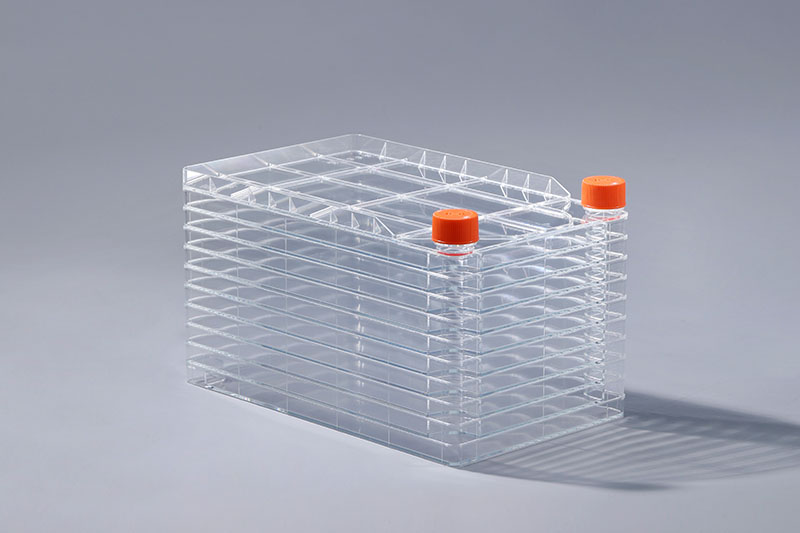은 세포 배양 소모품으로 제약회사 및 백신 생산과 같은 대규모 세포 배양의 주요 소모품이 되었습니다. 세포 배양에는 특정 조건이 필요하며, 그 중 멸균 환경이 in vitro 세포 배양의 기본 조건입니다.In vivo에서 해독 시스템과 면역 시스템은 미생물이나 기타 유해 물질의 침입에 저항할 수 있지만, 체외 배양 과정에서 세포는 신체의 면역 체계를 보호하지 못하고 미생물을 방어하고 유해 물질을 해독하는 능력을 상실합니다. 세포가 시험관 내 환경에서 성장하고 번식할 수 있도록 하려면 멸균 작업 영역, 양호한 개인 위생, 멸균 시약 및 배지, 무균 취급을 보장해야 합니다. 사용하는 세포 공장을 포함하여 모두 C급 청정 작업장에서 생산되며 소모품 자체에 세포 성장을 방해하는 요소가 없는지 확인하기 위해 생산 후 멸균해야 합니다.cell factory
일반적인 미생물 오염에는 마이코플라즈마, 박테리아 및 진균류. 마이코플라즈마는 치명적인 독성이 없고 장기간 세포와 공존할 수 있으며 세포에 잠재적인 영향을 미치지만 크기가 작고 식별이 어렵다. lichen red 또는 Hoechst33342 염색을 통해 검출할 수 있습니다. 박테리아는 빠르게 증식하고 단기간에 대량으로 증식할 수 있으며 독소를 생성하여 세포를 죽입니다. 육안으로 볼 수 있는 많은 종류의 균류가 배양액 표면에 떠 있으며 사상체, 관상 또는 수지상이 될 수 있습니다.
생명과학 분야의 급속한 발전과 함께 시장 수요 세포 공장도 증가하고 있습니다. 어떤 세포 배양 소모품을 사용하든 멸균 환경은 세포 성장을 보장하는 기본 조건입니다.
With the rapid development of the field of life sciences, the market demand for cell factories is also increasing. No matter which cell culture consumables are used, a sterile environment is the primary condition to ensure cell growth.
The FAI climbed 5.9 percent year-on-year in the first 11 months of 2018, quickening from the 5.7-percent growth in Jan-Oct, the National Bureau of Statistics (NBS) said Friday in an online statement.
The key indicator of investment, dubbed a major growth driver, hit the bottom in August and has since started to rebound steadily.
In the face of emerging economic challenges home and abroad, China has stepped up efforts to stabilize investment, in particular rolling out measures to motivate private investors and channel funds into infrastructure.
Friday's data showed private investment, accounting for more than 60 percent of the total FAI, expanded by a brisk 8.7 percent.
NBS spokesperson Mao Shengyong said funds into weak economic links registered rapid increases as investment in environmental protection and agriculture jumped 42 percent and 12.5 percent respectively, much faster than the average.
In breakdown, investment in high-tech and equipment manufacturing remained vigorous with 16.1-percent and 11.6-percent increases respectively in the first 11 months. Infrastructure investment gained 3.7 percent, staying flat. Investment in property development rose 9.7 percent, also unchanged.
 English
English



















































